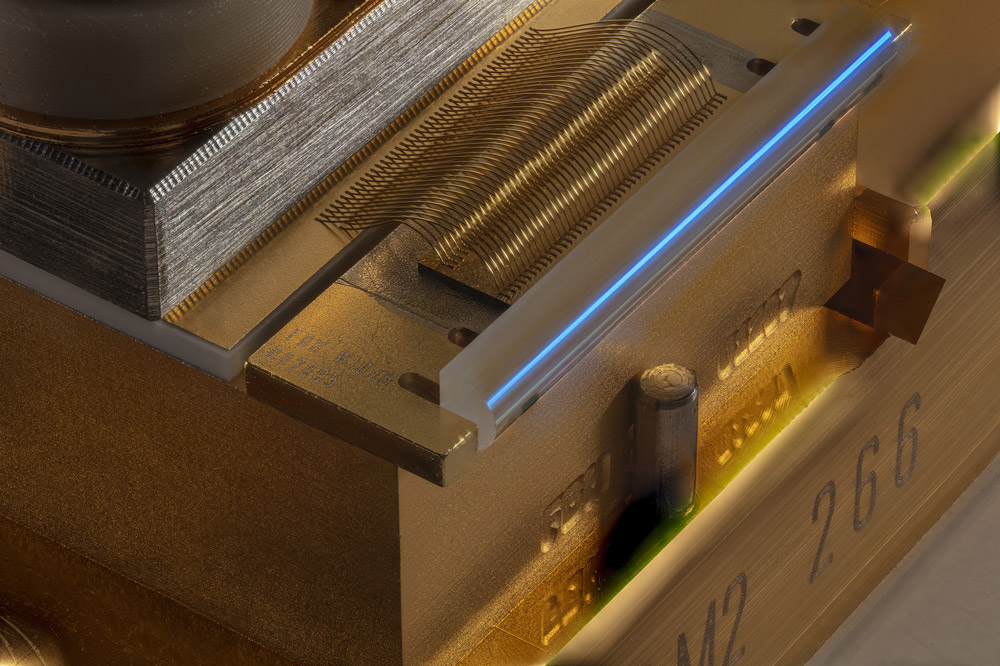News: Optoelectronics
20 July 2020
FBH delivers laser diode benches for MERLIN climate satellite
The Franco-German satellite MERLIN is due to be launched into space in 2025 to measure the methane concentration in the Earth’s atmosphere. Important components of the light detection & ranging (LiDAR) measurement system come from Ferdinand-Braun-Institut, Leibniz-Institut für Höchstfrequenztechnik (FBH) of Berlin, Germany, which has now delivered the required laser diode benches to the project partner.
The MERLIN mission aims to better understand the effect of the greenhouse gas methane on global warming. A radar-like laser system on the satellite measures natural and anthropogenic methane emissions: The Integrated Path Differential Absorption (IPDA) LiDAR sends laser light to the Earth’s surface and analyses the backscattered signal.
FBH has therefore developed and manufactured reliable laser diode benches (LDBs) for the MERLIN climate satellite. Six of these space-qualified LDBs have now been integrated into three pump modules from the Fraunhofer Institute for Laser Technology (ILT) of Aachen, Germany and delivered to the project partner ready for use. The modules generate the necessary pump energy for the oscillator of a Nd:YAG solid-state laser and are integrated into the LiDAR system by ILT. The solid-state laser, in turn, serves as the light source for a tunable optical parametric oscillator (OPO) that generates double pulses with different wavelengths in the infrared range around 1.6μm. One of these pulses is strongly absorbed by methane, the other is not. This way, the methane content can be determined from the ratio of intensities of the backscattered light.
Robust, space-qualified diode laser technology
The centerpieces of the pump modules are the laser diode benches supplied by FBH. Each LDB generates a pump power of over 60W in double pulses with a repetition rate of 20Hz and 150μs pulse width. Laser diode mini-bars are an essential component of the LDB and ensure efficient light generation. Due to the fast-axis collimation lenses integrated in the LDB, the laser beam can be coupled into an optical fiber with a minimum of loss. Two of these LDBs are integrated into each module and provide a joint pump power of 120W.
The diode laser, fast-axis collimation and LDB technology was first comprehensively tested at FBH and confirmed as being suitable for space applications. Subsequently, the laser diode benches were qualified by the European Space Research and Technology Center (ESTEC) in The Netherlands. The extensive life-cycle tests performed by ESTEC showed that the power degrades only minimally even after a long operating time of more than 4 billion pulses. The scientific team is therefore confident that the MERLIN measuring system will function failure-free even under space conditions.

Picture: Laser diode bench made by FBH, before mounting into the pump module.
Delivery of LDBs for the MERLIN mission has been made possible by the many years of comprehensive expertise accumulated at FBH in the development of space-qualified diode lasers. FBH technology will thus contribute to the detailed investigation of important and up to now little-known sources of global warming on the climate satellite – a milestone in European climate research, it is reckoned.
As part of the MERLIN satellite project, a collaboration between DLR RfM and CNES, the Fraunhofer ILT is developing the beam source (the laser optical assembly) of the laser transmitter under contract to Airbus DS GmbH. The work is being carried out on behalf of the Federal Ministry of Economics and Energy BMWi under grant number 50EP1601.








